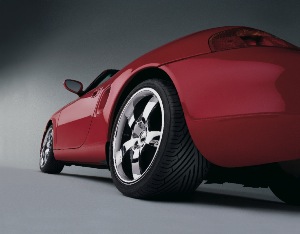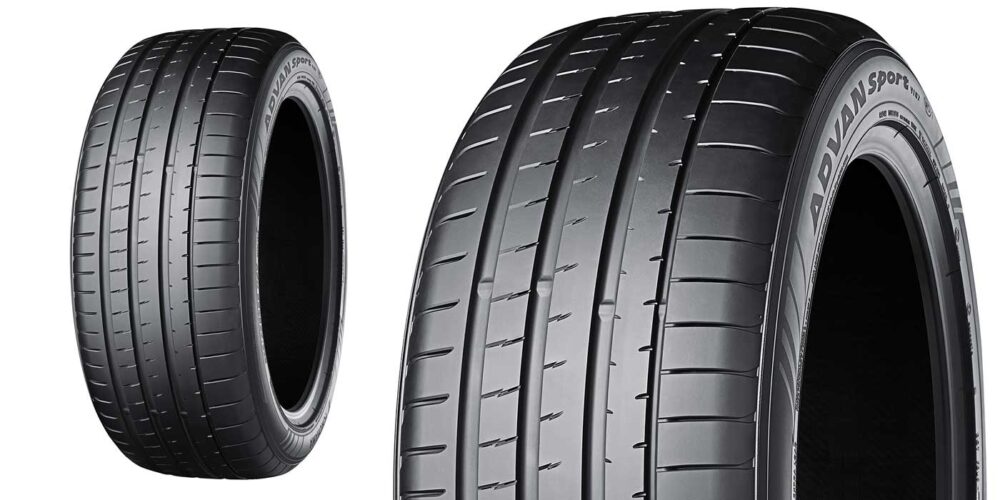Pick a car tire size, any auto tire dimension. Then choose a couple of different performance categories (ultra-high performance and touring work nicely for my example) from three or four manufacturers. 
Mount, inflate and measure the circumference and tread width – don’t get picky, just use the same point on all the tires. Or just stack up four mounted tires from each company. Between makes and models, you’re almost certain to find some differences in dimensions – perhaps some significant differences.
Important, Important, Important: This has nothing to do with production tolerances. The tires from Brand X will all be identical to all other Brand X tires. And all the Brand Ys will be the same. (I bet a dollar somebody will write a letter thinking this is about production tolerances. It’s not.)
Sometimes the difference is so big that the stack of Brand A’s tires are radically taller and wider than those from Brand Z. Sometimes the difference is almost non-existent.
The reason: Tire manufacturer associations allow a bit of leeway in what’s called a 245/45R17 and what’s not. You wouldn’t want to stock 251/51R17s and 242/42R17s, would you? While those individually may be more precise, those sizes can both be called 245/45R17.
Said another way, every 245/45R17 doesn’t have to be exactly 245 millimeters wide and its sidewall needn’t be exactly 45% as tall as 245 millimeters. (Many tire company engineers are terribly insufferable about details. Requiring such exactness would do harm to society.)
Tiremakers call these allowances “windows,” and they did it way before Bill Gates’ parents met. The tiremaker associations and tire companies are not forthcoming about the size of the window, or even that it exists. Look closely and you’ll often see the word “nominal” before the words “dimension” or “size” in documents written by insiders or produced by tire companies and reviewed by company lawyers. Oh, those lawyers.
To put more rubber on the ground, ultra-high performance tires will be on the upper left of the “window,” as tall and as wide as manufacturer association windows allow. Meanwhile, an economy tire will be on the lower right side of the window; to use as little material as possible, it will be as short and narrow as the guidelines allow. I used to know the window allowances, but that part of my organic hard drive has been corrupted.
Another thing that probably won’t be publicized heavily: the windows overlap. At the very upper left edge and the very lower right edge a tire could be called either of two dimensions. Some – or many? – or all? – tire companies make two tire sizes using the same size mold. Except for the size markings, the tires are absolutely identical.
Here’s how race fans might get a handle on this “window allowance” thing. NASCAR measures the distances of its tracks 15 feet from the outside wall. (It was said Richard Petty used to always race up there, so why not? And it produced higher average speeds to promote to the fans.)
Open-wheel racing – at least the Indianapolis Motor Speedway – stayed with horseracing tradition and measured from the inside rail (three feet away from the inside paint line at Indy.)
Measured the NASCAR way, Bristol Motor Speedway is 0.533 miles long. Measured the Indy way, it’s 0.5 miles long. Instead of 2.5 miles, Indy might be almost 2.7 miles long measured the NASCAR way.
Window Effects
A quiz: Why does all of this matter for a high-performance driver? You get a B+ if you said, “A taller, wider tire puts more rubber on the ground than a shorter, narrower tire.” It’s my experience that if anything is lost by the slight increase in center of gravity, it’s more than made up for by the tires. Said another way: “The stopwatch doesn’t lie.”
To get an A, you would have to know how to help a customer who wanted to put wider tires on his car. First, the tires need to be at least as tall as those coming off or he’ll have less rubber on the road. Next, you’ll need to check a lot of measurements to make sure the tires will even fit in the wheel wells. Then you probably will have to order a set (or, if it’s an uber-performance car, two pairs) of tires, inflate and mount them.
I worked for a tire company – that was the only way I could do it. I’m sure there are double-secret documents that list the actual circumferences, but I worked there and couldn’t even get the list. It certainly would have simplified things.
For a training exercise for the company’s test drivers, I planned to fit a Porsche 911 with wider front tires and slightly narrower rear tires. Yes, such a combination made the 911 difficult and touchy to drive, but these guys were supposed to be the best test drivers in the country. (Please don’t try this, except for track driving.)
I wanted to maintain Porsche’s stock ride height, so I searched for tires that would do the job. I wound up with 245s on the front and 255s on the rear. (Stock size is 205 in front and 265 in rear; the split is designed to keep Internet millionaires alive as the car will slide the nose rather than spin out in aggressive driving.)
I could not find a dimensional difference between the 245s and the 255s, so I tried the car on 255s all the way around.
Nothing from the seat of the pants or the stopwatch indicated any difference. They may have come from separate molds, but 255s all the way around was perfect for my purpose: The car intensely disliked being forced to do what the driver wanted. Instead, the driver had to learn the 911’s nuances and work with the car. And if they succeeded, the car was faster.
The search for a taller and wider tire is heated where DOT-legal race tires are permitted. These track-use tires have the government-mandated DOT alphanumeric code and, often, the phrase “not intended for highway use” on the sidewall. You can bet all will be in the upper left corner of the window – as tall and wide as possible. Sometimes they’ll try to sneak into the next-larger size window.
In racing, as with all other sports, it ain’t cheatin’ unless you get caught. Unless one brand rats out another, the racing officials will remain ignorant of this situation. Usually, the brand with the smaller tires just makes an even bigger mold. Eventually, they will call a truce when both race programs exceed their budget.
Size matters, size differs, size impacts performance. But how to tell without measuring? I don’t know.













